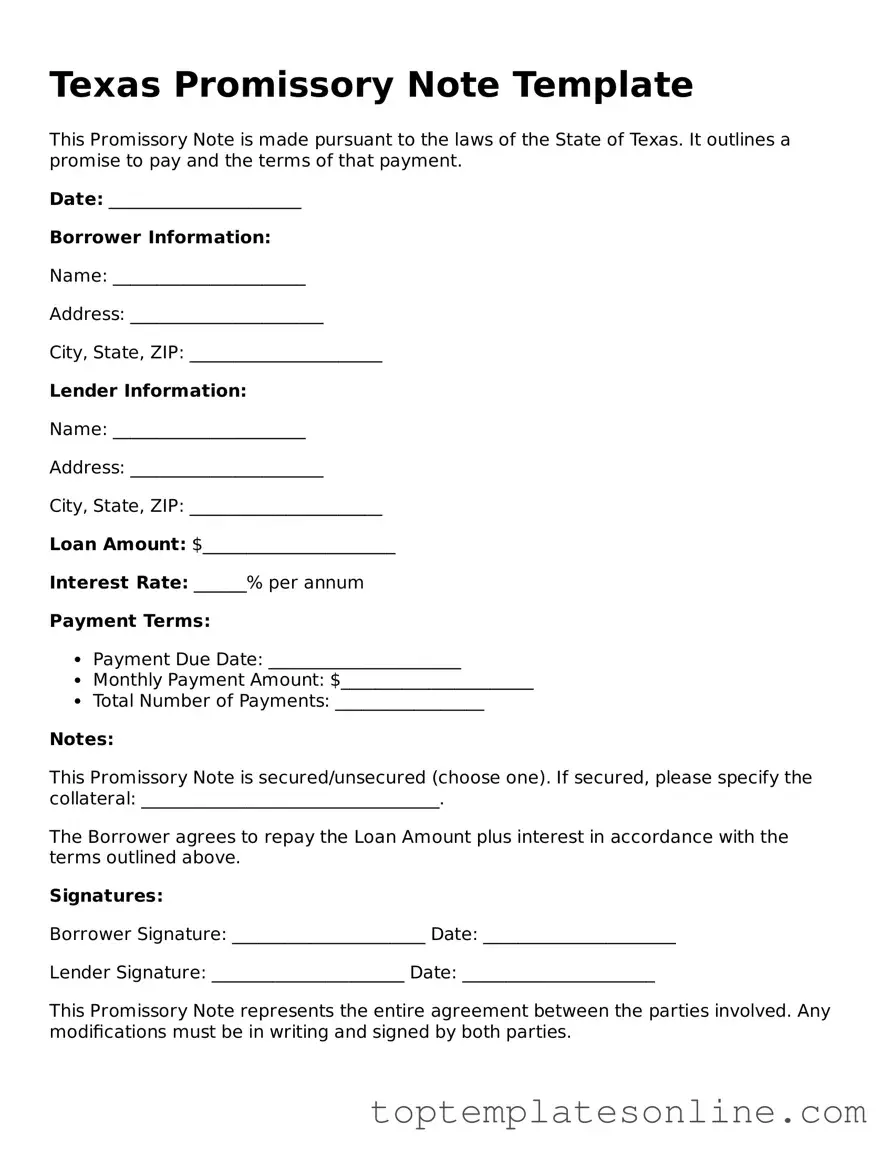Blank Promissory Note Template for Texas State
A Texas Promissory Note is a written promise to pay a specified amount of money to a designated person or entity at a defined time or on demand. This document outlines the terms of the loan, including interest rates and repayment schedules, providing clarity and security for both the borrower and the lender. Understanding this form is essential for anyone involved in lending or borrowing money in Texas.
Customize Promissory Note Here
